We're having a wonderful time, here in Italy at Le Giornate del Cinema Muto in Pordenone. One of the youngest stars whose work is shown here was Clément Mary (1905-1974). As Bébé, he was the best-known child actor of the early 1910s. He would later act in French sound films as René Dary.
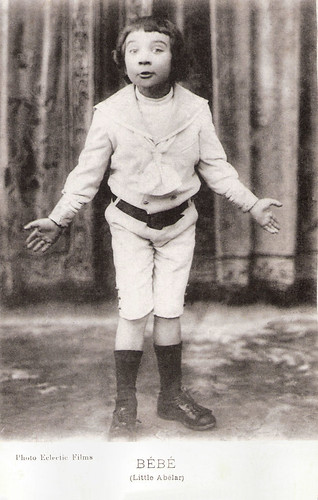
French postcard. Photo: Eclectic Films.

French collectors card by Massilia. Photo: Léo Mirkine.
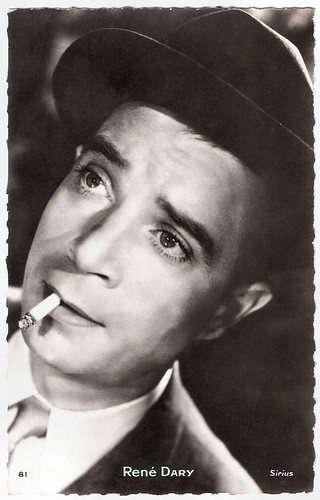
French postcard by Edit. Chantal, Rueil, no. 81. Photo: Sirius.
A few years before Bout-de-Zan (René Poyen), whom we previously published on this site, Gaumont already had a very popular child actor, called Bébé. The actor behind the character had quite a story. Maxime Braquet wrote about it on the French site La ville des gens, but we also used other sources for this bio.
Anatole Clément Mary, as was Bébé's original name, was born in 1905 in Paris. He got his chance in the Spring of 1910 when he was only five. His father Abélard Mary had put in his head to go and promote himself and his two young kids as extras at the Gaumont studio.
Mary, who had been an actor, had become a rundown clown in bars because of his gambling and kept things going with some furniture trade. He had set his hopes for his kids, and gambled well this time, as they were all hired for a peplum, Les Derniers Jours de Babylone/The Last Days of Babylon. Maxime Braquet: “Young Clément’s native playfulness, his histrionic acting making him older than he was, his borrowed street talk, and his ease on the set to charm everyone, from actors to technicians, soon began to attract the attention of producer-director Louis Feuillade.”
Feuillade tested him and designed a whole series around him, the Bébé series. All in all, Clément Mary would play in 74 Bébé comedies between 1910 and 1912, according to Braquet (76 between December 1910 and February 1913, according to Francis Lacassin in Pour une contre-histoire du cinema, while IMDb lists 73 titles), such as Bébé apache (Louis Feuillade, 1910), Napoléon, Bébé et les cosaques (Louis Feuillade, 1912), Bébé en Maroc (Louis Feuillade, 1912), etc.
Lacassin writes that Feuillade permitted little Mary to do anything forbidden at home. Often his character would be a spoiled brat, have impossible tantrums and pester all adults around him, but he could also help children and old people in distress, showing his good heart after all. Often his mother would be played by Renée Carl, a leading Gaumont actress on her own. And often the child was placed in adult situations, as a millionaire, marriage candidate or underworld ‘apache’. For over two years Bébé was the best known child actor worldwide.
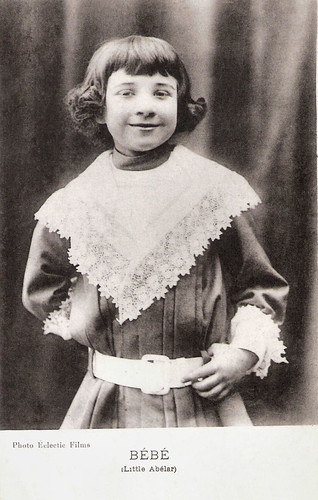
French postcard. Photo Eclectic Films.
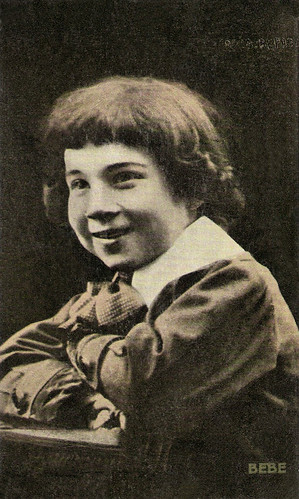
Spanish postcard in the Series Principales Artistas Cinematograficos by Chocolate Amattler Marca Luna, Serie 1a, no. 29.
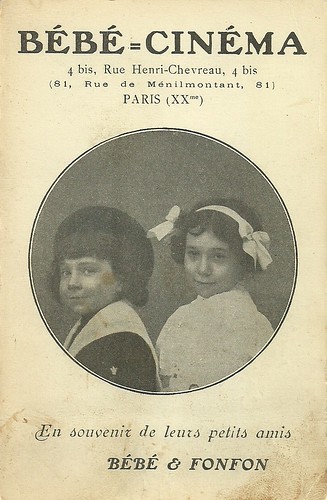
French postcard for the Bébé-Cinéma, at Paris, 4, bis, rue Henri Chevreau, in the quarter of Ménilmontant. The cinema already existed as Etoile Cinéma from 1909. On 17 January 1913, the cinema was inaugurated. When he wasn't shooting little Bébé and his sister Fonfon would come on stage, to the joy of the locals. His father tried to buy all the films of his son. It was no success. In July 1913 the cinema was resold a few times and continued a modest life as Modern Ciné and Trianon until 1933.
The extremely good box office of his son's films made Papa Mary wealthy too, but his money hunger would cause the downfall of his son.
Abélard bought a small cinema in Ménilmontant and called it Bébé-Cinéma, counting on a franchise by Gaumont to show his son’s films. This was the limit for Feuillade, who was already fed up with the pretense of the father’s self-promotion as his son’s manager and his continuous demands for raises for his son.
Besides, Clément was reaching an age where his cuteness as a child actor was passing. Already in mid-1912 another young kid, René Poyen, had been picked up in Belleville, near the studios, and had started as a supporting actor to Clément in the film Bébé adopte un petit frère/Bébé adopts a little brother (Louis Feuillade, 1912). Bout-de-Zan replaced Bébé completely in March 1913 (February 1913, according to Francis Lacassin.
Abélard went to court against Gaumont. The court ruled that the breach of contract was just, but also that Mary was allowed to continue acting as Bébé at Pathé’s subsidiary Eclectic Films, and he did so until 1916.
Yet, it was no competition for Gaumont’s Bout-de-Zan. As David Robinson mentions in The Encyclopedia of Early Cinema, Bout-de-Zan was more plebeian while Bébé was ‘au fond’ bourgeois as type. Still, in the end, René Poyen did some 50 films for Gaumont, less than Mary.
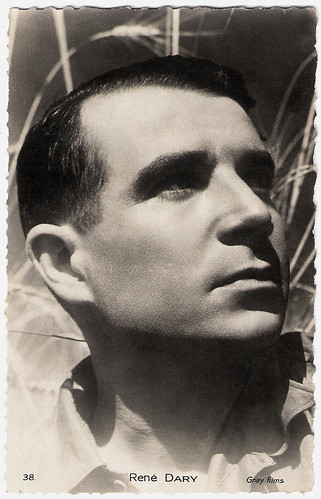
French postcard by Editions E.C., Paris, no. 38. Photo: Gray Films.
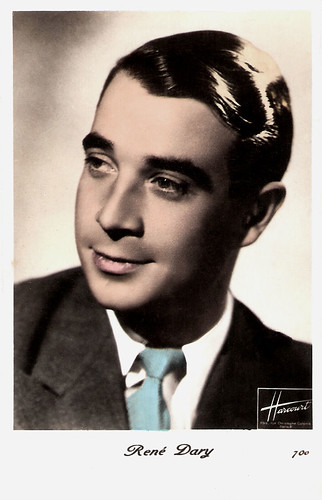
French postcard, no. 700. Photo: Studio Harcourt.
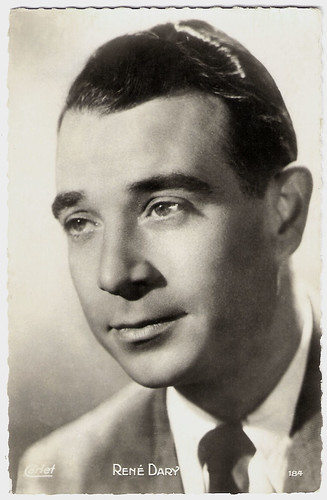
French postcard by Editions P.I., Paris, no. 184. Photo: Carlet.
As a young man, Clément Mary tried professional boxing but acting stuck in his blood, so he took acting lessons with Lucien Guitry and joined stage tours as René Duclos. Harry Baur advised him to focus on Paris, where he acted in the operetta 'Pour ton Bonheur', and in 'Les trois valses' with Pierre Fresnay and Yvonne Printemps.
In 1934 he debuted in French sound cinema with bit parts, e.g. in Le Train de 8:47/The Train of 8:47 (Henry Wulschleger, 1934), starring Fernandel. Director Jean-Benoit Lévy convinced him to change his name again, now to René Dary.
His role as the anarchist sailor in Le Révolte/The Rebel (1938) by Léon Mathot finally put him back in the spotlight. Dary then specialised in tough, taciturn sailors who under outside brawling hid true generosity, in films like Nord-Atlantique/North Atlantic (Maurice Cloche, 1939), Le Café du port/The Harbour Café (Jean Choux, 1940), Forte Tête (Léon Mathot, 1942), and À la belle frégate/At the Beautiful Frigate (Albert Valentin, 1943) with Michèle Alfa.
During the war, René Dary peaked as the bad boy repented in Le carrefour des enfants perdus/Crossroads of the Lost Children (Léo Joannon, 1944). Dary was also the first to embody for the cinema the character of Nestor Burma, the famous shock detective imagined by novelist Léo Malet. He portrayed Burma in the film 120, Quai de la Gare (Jacques Daniel-Norman, 1943) with Sophie Desmarets and Jean Parédès.
After that, his popularity as a film actor declined, apart from his part of Riton, the friend of Max (Jean Gabin), in Touchez pas au grisbi!/Hands Off the Loot (Jacques Becker, 1954). Dary continued to act on stage and was quite successful there in the 1960s. He also acted in television dramas and wrote a novel, 'Express 407'. Clément Mary a.k.a. Bébé a.k.a. René Dary died in 1974 in Plan-de-Cuques (Bouche-du-Rhône), France.
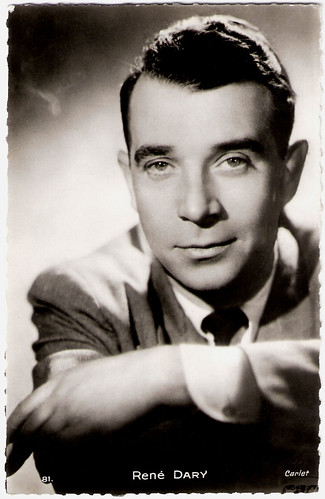
French postcard by Editions E.C., no. 81. Photo: Carlet.
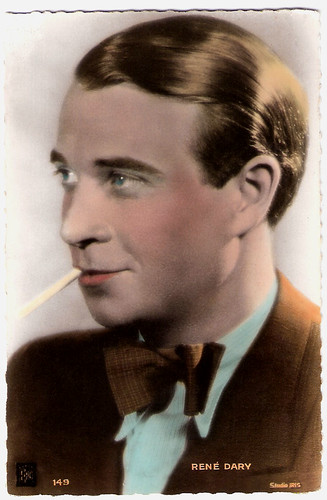
French postcard by Editions et Publications Cinematographiques (EPC), no. 149. Photo: Studio Iris.
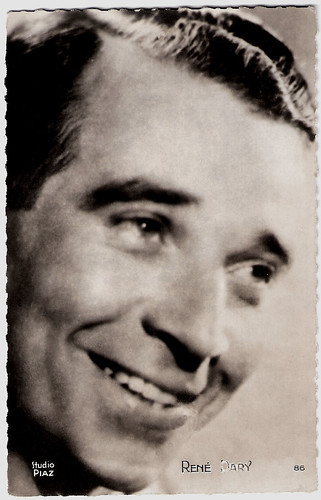
French postcard by Editions P.I., Paris, no. 86. Photo: Studio Piaz.
Sources: David Robinson (The Encyclopedia of Early Cinema), Francis Lacassin (Pour une contre-histoire du cinema - French), Jean-Jacques Meusy (Paris-Palaces ou le temps des cinémas - 1894-1918 - French), Maxime Braquet (Les aventures de Bébé et Bout-de-Zan - La ville des gens - French), and IMDb.
This post was last updated on 29 November 2023.

French postcard. Photo: Eclectic Films.

French collectors card by Massilia. Photo: Léo Mirkine.

French postcard by Edit. Chantal, Rueil, no. 81. Photo: Sirius.
A spoiled brat with impossible tantrums
A few years before Bout-de-Zan (René Poyen), whom we previously published on this site, Gaumont already had a very popular child actor, called Bébé. The actor behind the character had quite a story. Maxime Braquet wrote about it on the French site La ville des gens, but we also used other sources for this bio.
Anatole Clément Mary, as was Bébé's original name, was born in 1905 in Paris. He got his chance in the Spring of 1910 when he was only five. His father Abélard Mary had put in his head to go and promote himself and his two young kids as extras at the Gaumont studio.
Mary, who had been an actor, had become a rundown clown in bars because of his gambling and kept things going with some furniture trade. He had set his hopes for his kids, and gambled well this time, as they were all hired for a peplum, Les Derniers Jours de Babylone/The Last Days of Babylon. Maxime Braquet: “Young Clément’s native playfulness, his histrionic acting making him older than he was, his borrowed street talk, and his ease on the set to charm everyone, from actors to technicians, soon began to attract the attention of producer-director Louis Feuillade.”
Feuillade tested him and designed a whole series around him, the Bébé series. All in all, Clément Mary would play in 74 Bébé comedies between 1910 and 1912, according to Braquet (76 between December 1910 and February 1913, according to Francis Lacassin in Pour une contre-histoire du cinema, while IMDb lists 73 titles), such as Bébé apache (Louis Feuillade, 1910), Napoléon, Bébé et les cosaques (Louis Feuillade, 1912), Bébé en Maroc (Louis Feuillade, 1912), etc.
Lacassin writes that Feuillade permitted little Mary to do anything forbidden at home. Often his character would be a spoiled brat, have impossible tantrums and pester all adults around him, but he could also help children and old people in distress, showing his good heart after all. Often his mother would be played by Renée Carl, a leading Gaumont actress on her own. And often the child was placed in adult situations, as a millionaire, marriage candidate or underworld ‘apache’. For over two years Bébé was the best known child actor worldwide.

French postcard. Photo Eclectic Films.

Spanish postcard in the Series Principales Artistas Cinematograficos by Chocolate Amattler Marca Luna, Serie 1a, no. 29.

French postcard for the Bébé-Cinéma, at Paris, 4, bis, rue Henri Chevreau, in the quarter of Ménilmontant. The cinema already existed as Etoile Cinéma from 1909. On 17 January 1913, the cinema was inaugurated. When he wasn't shooting little Bébé and his sister Fonfon would come on stage, to the joy of the locals. His father tried to buy all the films of his son. It was no success. In July 1913 the cinema was resold a few times and continued a modest life as Modern Ciné and Trianon until 1933.
The downfall of Bébé
The extremely good box office of his son's films made Papa Mary wealthy too, but his money hunger would cause the downfall of his son.
Abélard bought a small cinema in Ménilmontant and called it Bébé-Cinéma, counting on a franchise by Gaumont to show his son’s films. This was the limit for Feuillade, who was already fed up with the pretense of the father’s self-promotion as his son’s manager and his continuous demands for raises for his son.
Besides, Clément was reaching an age where his cuteness as a child actor was passing. Already in mid-1912 another young kid, René Poyen, had been picked up in Belleville, near the studios, and had started as a supporting actor to Clément in the film Bébé adopte un petit frère/Bébé adopts a little brother (Louis Feuillade, 1912). Bout-de-Zan replaced Bébé completely in March 1913 (February 1913, according to Francis Lacassin.
Abélard went to court against Gaumont. The court ruled that the breach of contract was just, but also that Mary was allowed to continue acting as Bébé at Pathé’s subsidiary Eclectic Films, and he did so until 1916.
Yet, it was no competition for Gaumont’s Bout-de-Zan. As David Robinson mentions in The Encyclopedia of Early Cinema, Bout-de-Zan was more plebeian while Bébé was ‘au fond’ bourgeois as type. Still, in the end, René Poyen did some 50 films for Gaumont, less than Mary.

French postcard by Editions E.C., Paris, no. 38. Photo: Gray Films.

French postcard, no. 700. Photo: Studio Harcourt.

French postcard by Editions P.I., Paris, no. 184. Photo: Carlet.
Back in the spotlight
As a young man, Clément Mary tried professional boxing but acting stuck in his blood, so he took acting lessons with Lucien Guitry and joined stage tours as René Duclos. Harry Baur advised him to focus on Paris, where he acted in the operetta 'Pour ton Bonheur', and in 'Les trois valses' with Pierre Fresnay and Yvonne Printemps.
In 1934 he debuted in French sound cinema with bit parts, e.g. in Le Train de 8:47/The Train of 8:47 (Henry Wulschleger, 1934), starring Fernandel. Director Jean-Benoit Lévy convinced him to change his name again, now to René Dary.
His role as the anarchist sailor in Le Révolte/The Rebel (1938) by Léon Mathot finally put him back in the spotlight. Dary then specialised in tough, taciturn sailors who under outside brawling hid true generosity, in films like Nord-Atlantique/North Atlantic (Maurice Cloche, 1939), Le Café du port/The Harbour Café (Jean Choux, 1940), Forte Tête (Léon Mathot, 1942), and À la belle frégate/At the Beautiful Frigate (Albert Valentin, 1943) with Michèle Alfa.
During the war, René Dary peaked as the bad boy repented in Le carrefour des enfants perdus/Crossroads of the Lost Children (Léo Joannon, 1944). Dary was also the first to embody for the cinema the character of Nestor Burma, the famous shock detective imagined by novelist Léo Malet. He portrayed Burma in the film 120, Quai de la Gare (Jacques Daniel-Norman, 1943) with Sophie Desmarets and Jean Parédès.
After that, his popularity as a film actor declined, apart from his part of Riton, the friend of Max (Jean Gabin), in Touchez pas au grisbi!/Hands Off the Loot (Jacques Becker, 1954). Dary continued to act on stage and was quite successful there in the 1960s. He also acted in television dramas and wrote a novel, 'Express 407'. Clément Mary a.k.a. Bébé a.k.a. René Dary died in 1974 in Plan-de-Cuques (Bouche-du-Rhône), France.

French postcard by Editions E.C., no. 81. Photo: Carlet.

French postcard by Editions et Publications Cinematographiques (EPC), no. 149. Photo: Studio Iris.

French postcard by Editions P.I., Paris, no. 86. Photo: Studio Piaz.
Sources: David Robinson (The Encyclopedia of Early Cinema), Francis Lacassin (Pour une contre-histoire du cinema - French), Jean-Jacques Meusy (Paris-Palaces ou le temps des cinémas - 1894-1918 - French), Maxime Braquet (Les aventures de Bébé et Bout-de-Zan - La ville des gens - French), and IMDb.
This post was last updated on 29 November 2023.
No comments:
Post a Comment